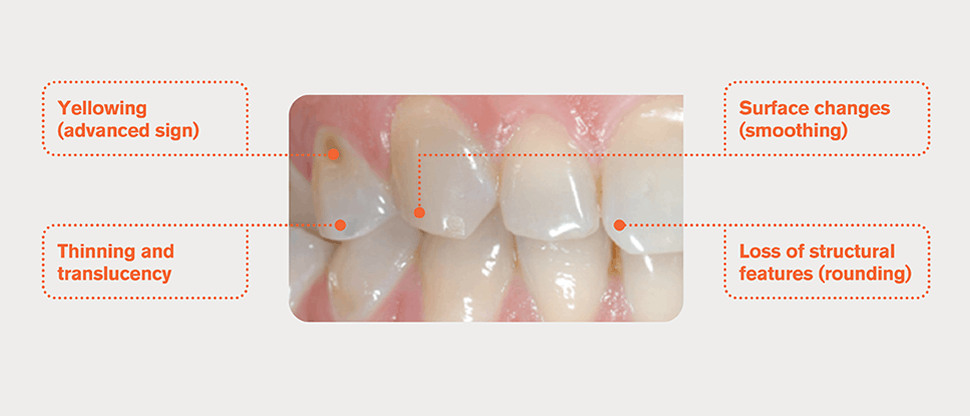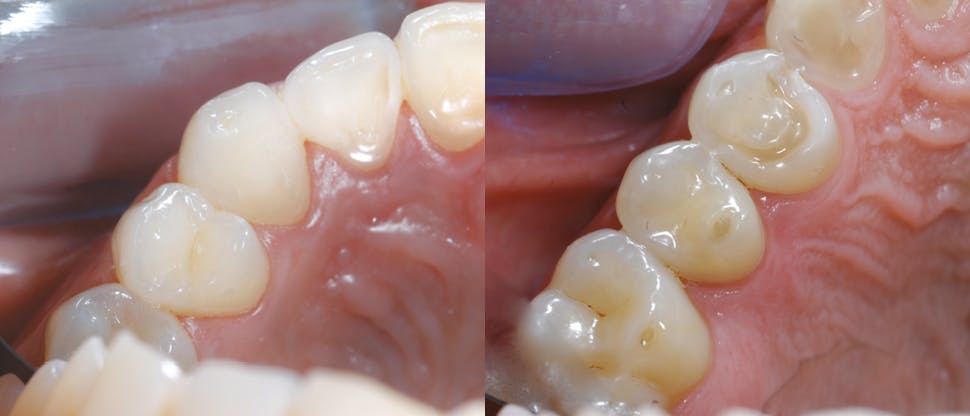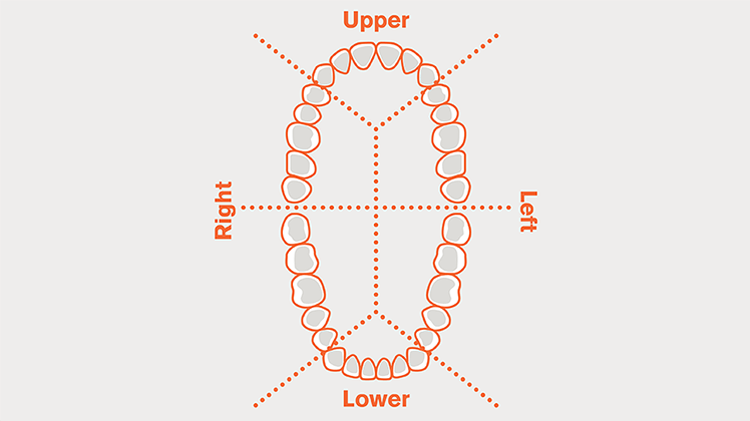Enamel wear: Diagnosis

How to diagnose enamel wear
Enamel wear is gradual and can be hard to detect during the early stages. Explore the tools that can help you identify enamel wear.
Early diagnosis of enamel wear is important to prevent further, lasting damage1

Common features of enamel wear2,3
Clinical appearance is critical to identifying enamel erosion. Over time, the wear caused by enamel erosion can lead to reduced thickness of tooth enamel and a change in the texture, shape, and appearance of the teeth, which may also cause teeth to become sensitive.2,3
These include 2,3:
- Yellowing (advanced sign)As erosion becomes more severe, enamel thins, exposing the dentin underneath and causing teeth to appear yellow or discolored.
- Thinning and translucencyTeeth that appear thin and translucent are a sign that tooth enamel erosion may have already begun.
- Surface changes (smoothing)One sign of dental erosion is the loss of the surface of the tooth, leading to a smooth, shiny appearance.
- Loss of structural features (rounding)Dental erosion, if untreated, can lead to the progressive loss of the surface of the tooth. The loss of tooth structure can require complex and lengthy treatment involving fillings, veneers, crowns, and potentially root canals.

Other signs of enamel wear2,3
These include:
- Palatal erosive tooth wear
- Occlusal cupping
The Basic Erosive Wear Examination (BEWE)
The BEWE is a quick, effective, validated tool for assessing enamel wear4 and was a key tool in the ESCARCEL study; the first pan-European epidemiology study on non-carious cervical lesions (NCCL) and associated risk factors, and the largest and most comprehensive study of its kind.
The BEWE in practice
Sensodyne - helping your patients manage dentine hypersensitivity due to enamel wear
Impact on patient quality of life
Find out about the impact enamel wear has on patients’ daily lives.

The Sensodyne range
Find out how the Sensodyne range can help your patients with dentine hypersensitivity due to enamel wear.
